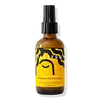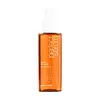What's inside
What's inside
 Key Ingredients
Key Ingredients

No key ingredients
 Benefits
Benefits

 Concerns
Concerns

 Ingredients Side-by-side
Ingredients Side-by-side

Cyclopentasiloxane
EmollientDimethiconol
EmollientC12-15 Alkyl Benzoate
AntimicrobialParfum
MaskingArgania Spinosa Kernel Oil
EmollientSimmondsia Chinensis Seed Oil
EmollientCocos Nucifera Oil
MaskingLimonene
PerfumingPrunus Armeniaca Kernel Oil
MaskingOlea Europaea Fruit Oil
MaskingSclerocarya Birrea Seed Oil
HumectantCamellia Japonica Seed Oil
EmollientCoco-Caprylate/Caprate
EmollientLinalool
PerfumingCitronellol
PerfumingCaprylic/Capric Triglyceride
MaskingGeraniol
PerfumingCapsicum Annuum Extract
MaskingBeta-Carotene
Skin ConditioningTocopherol
AntioxidantGlycolipids
Skin ConditioningCyclopentasiloxane, Dimethiconol, C12-15 Alkyl Benzoate, Parfum, Argania Spinosa Kernel Oil, Simmondsia Chinensis Seed Oil, Cocos Nucifera Oil, Limonene, Prunus Armeniaca Kernel Oil, Olea Europaea Fruit Oil, Sclerocarya Birrea Seed Oil, Camellia Japonica Seed Oil, Coco-Caprylate/Caprate, Linalool, Citronellol, Caprylic/Capric Triglyceride, Geraniol, Capsicum Annuum Extract, Beta-Carotene, Tocopherol, Glycolipids
 Reviews
Reviews

Ingredients Explained
These ingredients are found in both products.
Ingredients higher up in an ingredient list are typically present in a larger amount.
This oil comes from the seeds of the desert shrub called Jojoba. It is more commonly known as jojoba oil, a non-comedogenic oil.
Jojoba oil does not contain fragrance and has many fatty-acids, making it a great soothing ingredient.
It also contains Vitamin E, a great moisturizing ingredient. Vitamin E is also an antioxidant and protects your skin against oxidative damage.
This ingredient humectant properties, meaning it helps draw moisture from the air. This helps keep your skin hydrated.
While jojoba has antibacterial properties, it is only able to kill some strains of bacteria.
Studies also show it helps in wound healing. In fact, Indigenous cultures have used jojoba as a moisturizer and to help treat burns for centuries.
Fun fact: Jojoba oil similar to natural human skin sebum, so it has a great effect on dry skin. It is also promising with helping to regulate sebum production.
Due to its fatty acid content, Jojoba oil may not be fungal acne safe. We recommend speaking with a professional if you have any concerns.
Learn more about Simmondsia Chinensis Seed Oil